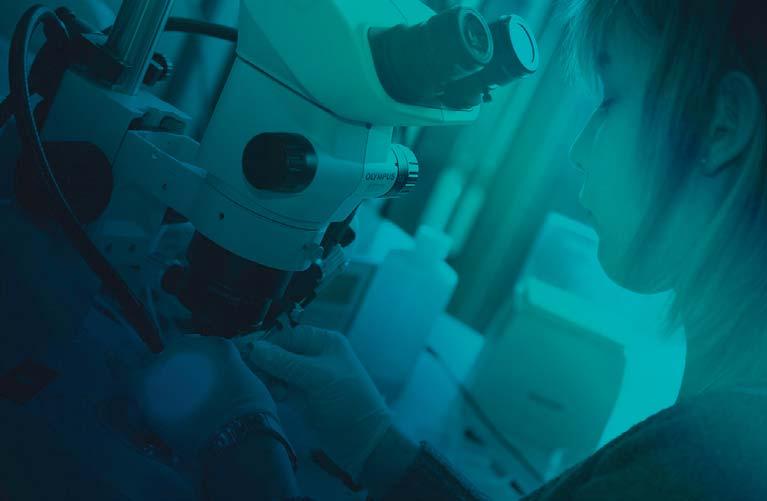I
n
n
o
The nanobody toolbox for research and industry Founded in 2018, Gulliver Biomed builds on the expertise acquired in the field of immunomodulation to foster nanobody research and bring these powerful tools to the scientific community and private industry at large.
N
industry significantly and expect that monoclonal antibodies in diagnosis and therapy will ultimately be replaced by affordable nanobodies, performing the same trick, and sometimes even better. This is especially relevant to developing countries in Africa.
Gulliver Biomed BV generates nanobodies against a broad variety of proteins. It takes barely two months to develop a nanobody. We can produce antigens recombinantly in bacteria or in mammalian cells. Nanobodies can be used as a research tool in biomedical labs worldwide, as a diagnostic or as a therapeutic, in any experiment similar to conventional antibodies. Indeed they can also be expressed in the cytoplasm of mammalian cells to directly interfere, delocalize or even degrade its target. The cytoplasm contains numerous therapeutic targets. Nanobodies will quickly reveal if it is worthwhile to develop a ‘classical’ drug against a given protein, which will save you a lot of time and money. It can also be used to investigate potential side effects of a drug.
© Gulliver Biomed
anobodies were serendipitously discovered at the end of the eighties in Prof. Haemers’ Immunology Lab at VUB, Brussels. They correspond with the antigen binding part of a camelid heavy chain antibody and are ten times smaller than a normal antibody. Importantly, one obtains their cDNA and they can be expressed in unlimited quantities in bacteria at a much lower cost than expensive monoclonals.
Mr Jan Gettemans, founder and CEO of Gulliver Biomed
Gulliver Biomed has developed nanobodies for researchers targeting tumor progression, cancer cell invasion, inflammation, and amyloid disorders worldwide: Harvard University (Boston), the Francis Crick Institute in London, and other players in Belgium, Germany, and South-Korea. Nanobodies are also ideal tools for medical imaging and have many applications in agriculture and food safety.
Gulliver Biomed is also developing nanobodies against proteins of the coronavirus that could be used to diagnose or treat covid-19. Such a disease is difficult to tackle worldwide with a monoclonal antibody because billions of doses are required. Therefore it should be replaced by a nanobody. In the long rung we will not be able to justify the use of expensive antibody therapeutics that can cost up to €20,000 per patient per month in extreme cases. Once an affordable alternative is developed, markets will have to reconsider their bias in favor of monoclonal antibodies… In the future Gulliver Biomed anticipates the development of many new nanobodies for treating a broad variety of diseases, including thousands of rare diseases listed worldwide. Within 5-10 years nanobodies might also be available for targetting today untreated proteininduced diseases inside cells (and not on their surface as is the case with most therapeutic antigens). Good reasons to hope! © Gulliver Biomed
v
a
t
i
o
n
T e
c
h
n
o
l
o
g
y
Gulliver Biomed
Currently, Gulliver Biomed BV is working on nanobody derivatives that can be coupled covalently and site-specifically to other compounds such as fluorophores, drugs, quantum dots etc. (socalled antibody drug conjugates or ‘ADCs). What is more, they remain biologically active because conjugation occurs at a predetermined safe site in the nanobody. All this results from their cDNA availability. We aim to increase our contacts with private
Gulliver Biomed I.I.C., Technology park 82 - 9052 Ghent-Zwijnaarde Tel.: +32 (0)53 570 727 E-mail : jan.gettemans@gulliverbiomed.com https://gulliverbiomed.com/ 62

















































































































